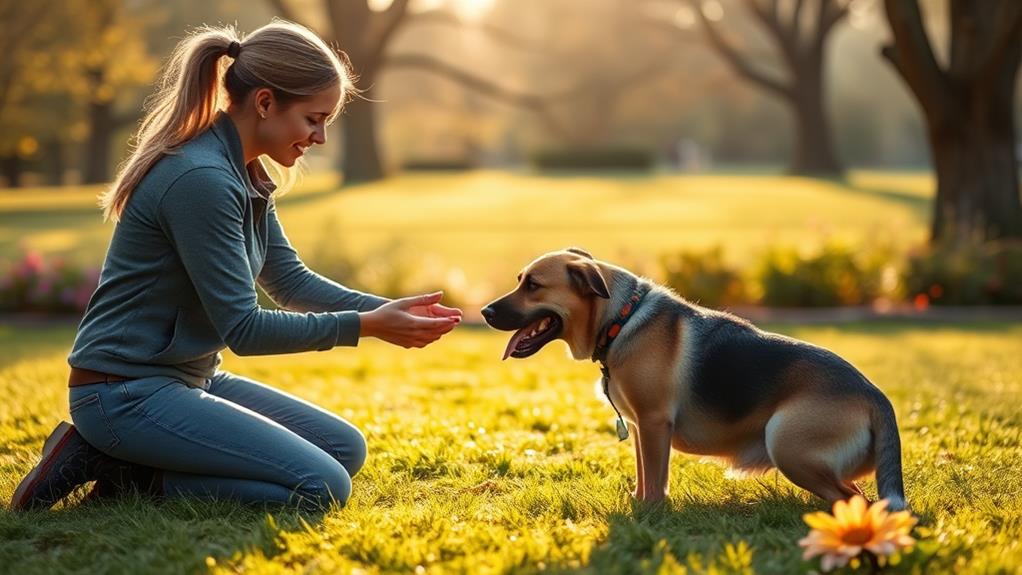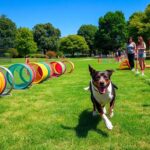Behavior modification helps calm anxious rescue dogs by addressing the root causes of their fears and stressors. These techniques empower you to change your dog's reactions to triggers, creating a more stable and secure environment. By using positive reinforcement and consistency, you encourage desirable behaviors while gradually desensitizing them to specific fears. Establishing trust through patience and understanding is key. It's also essential to provide a safe space for your dog to relax. With the right approach, you'll see remarkable transformation in their behavior and well-being, opening the door to deeper bonding and happiness together. Discover more about effective strategies.
Understanding Rescue Dog Anxiety
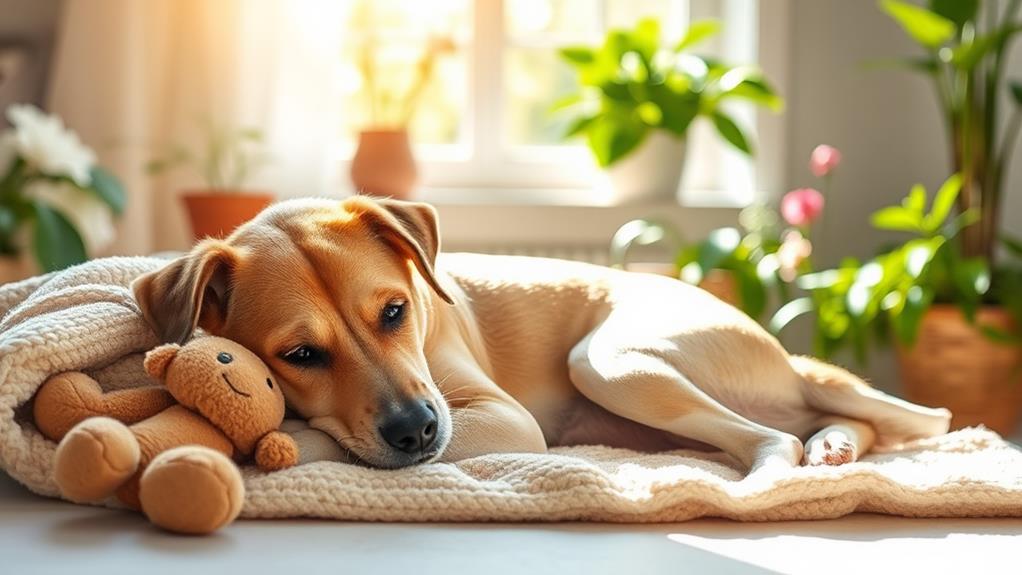
Understanding a rescue dog's anxiety starts with recognizing the unique challenges they face. Often, these dogs have experienced trauma, neglect, or unstable environments before arriving at your home. This history can lead to heightened fear and uncertainty in new situations. You might notice signs of anxiety, like excessive barking, trembling, or hiding, which indicate their struggle to feel safe.
Your rescue dog might also exhibit anxiety during specific triggers, such as loud noises, unfamiliar visitors, or changes in routine. It's crucial to pay close attention to these cues, as they can help you understand what makes your dog uncomfortable. Recognizing these challenges allows you to approach your dog's behavior with empathy and patience.
Moreover, rescue dogs may not have had the benefit of socialization during their formative weeks, making them more prone to anxiety in social settings. Building trust takes time, and you'll need to be consistent in your interactions. By fostering a calming environment and being aware of their triggers, you can begin to help your dog feel more secure. Remember, understanding their anxiety is the first step toward creating a supportive and loving home for your new companion.
The Role of Behavior Modification

Utilizing behavior modification techniques can noticeably improve your rescue dog's anxiety levels. These methods focus on changing your dog's reactions to triggers that cause stress or fear. By consistently applying these techniques, you can create a more stable environment for your dog, helping them feel secure and less anxious.
When you engage in behavior modification, you're not just addressing the symptoms of anxiety; you're also working on the root causes. This process encourages your dog to develop new, positive associations with situations that previously caused distress. For instance, rather than reacting fearfully to loud noises or unfamiliar people, your dog learns that these experiences can be safe and even enjoyable.
Consistency is key. The more you reinforce positive behaviors, the more likely your dog will adopt them as a new norm. You'll also find that patience plays a significant role in this journey. Progress may take time, but the bond you strengthen with your dog through this process is invaluable. Ultimately, behavior modification not only helps reduce anxiety but also fosters a deeper understanding and connection between you and your rescue dog, leading to a happier, healthier life together.
Key Techniques for Behavior Change
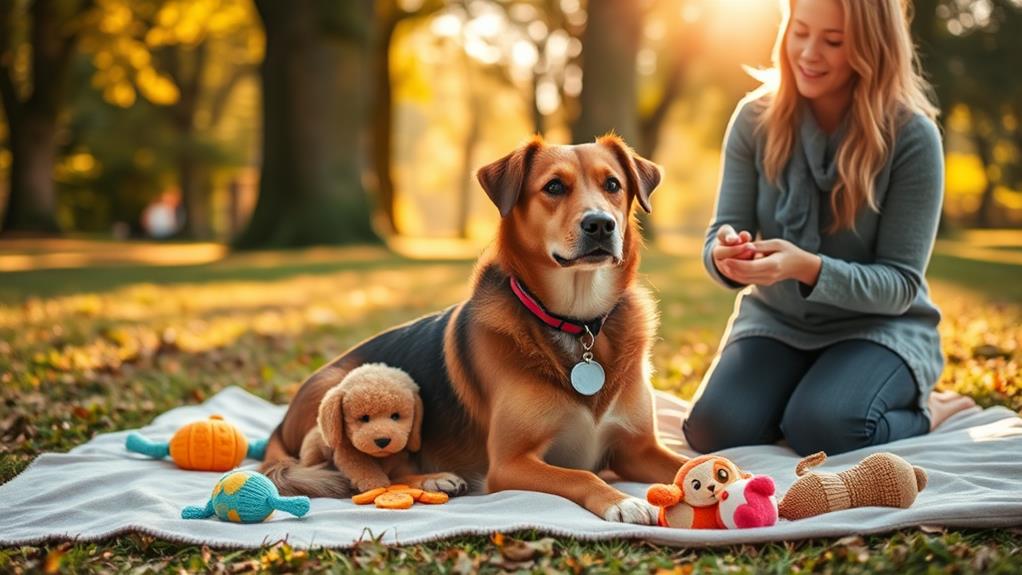
To effectively change your rescue dog's behavior, it's important to implement specific techniques that support their progress. Start by using positive reinforcement. Reward your dog with treats, praise, or playtime when they exhibit desired behaviors. This encourages them to repeat those actions and builds a trusting bond between you.
Next, consistency is key. Establish a routine for training sessions and stick to the same commands and cues. Your dog will learn faster when they know what to expect. Also, keep training sessions short and engaging, around 5 to 10 minutes, to maintain their focus and enthusiasm.
Desensitization is another effective technique. Gradually expose your dog to the situations or stimuli that trigger their anxiety, allowing them to become accustomed to these triggers at their own pace. Pair this exposure with positive reinforcement to create a more positive association.
Lastly, always be patient. Behavior change takes time, especially for anxious dogs. Celebrate small victories and be aware of their progress, adjusting your techniques as necessary. By applying these key techniques, you'll help your rescue dog feel more comfortable and confident in their new environment.
Creating a Safe Environment
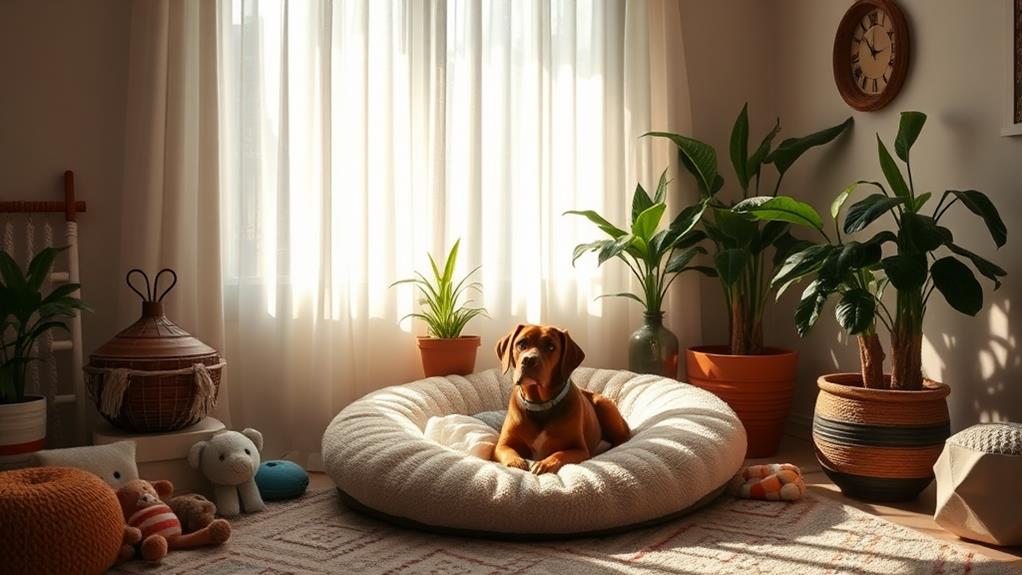
A secure space is indispensable for helping anxious rescue dogs adjust to their new home. This area should feel safe and inviting, ideally away from the hustle and bustle of daily life. Consider setting up a cozy corner with their bed, blankets, and favorite toys. This sanctuary allows them to retreat when they feel overwhelmed.
Minimize noise and distractions in this space. If possible, choose a room or a corner that's quiet and calm. You can also use a crate, as it can provide a den-like environment that many dogs find comforting. Just make sure it's a positive space—never use it as a punishment.
Establish a consistent routine around their safe area. Regular feeding, potty breaks, and quiet time can help your dog feel more secure. Remember, it's important to give them the choice to enter this space when they need to. Allow them to explore their environment at their own pace.
Lastly, avoid overwhelming them with too many visitors or loud activities. Creating a safe environment is the first step in helping your anxious dog feel more relaxed and secure in their new home.
Building Trust With Your Dog
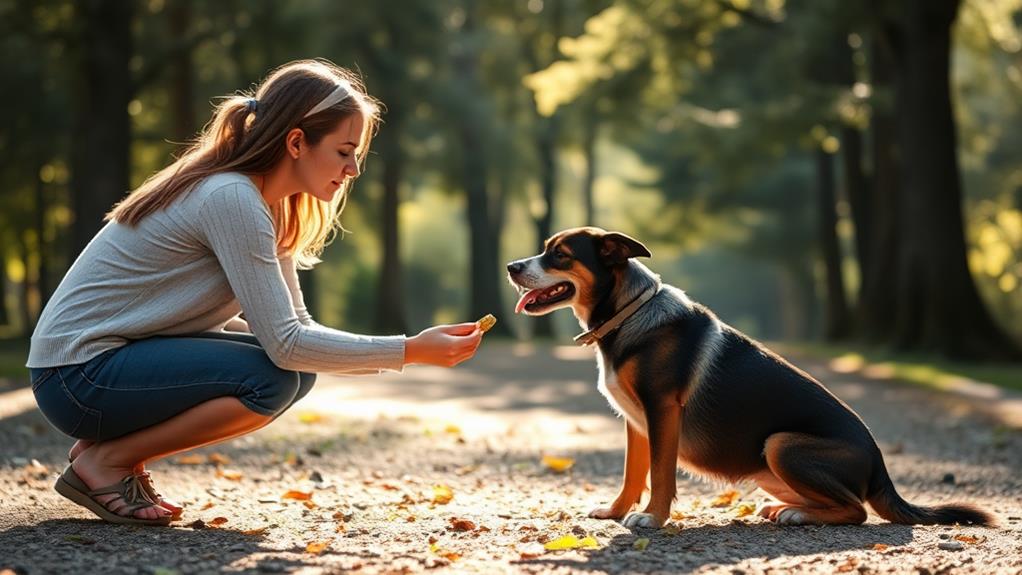
Once your rescue dog has a secure space to retreat to, the next step is to build trust with them. This process takes time and patience, but it's crucial for your dog's emotional well-being. Start by allowing your dog to approach you at their own pace. Avoid overwhelming them with sudden movements or loud noises.
To foster trust, use positive reinforcement and gentle interactions. Here's a helpful guide:
| Action | Purpose |
|---|---|
| Offer treats | Create positive associations |
| Use a calm voice | Reduce anxiety |
| Play gently | Encourage bonding |
| Respect their space | Show you understand boundaries |
| Be patient | Allow them to progress slowly |
Reinforce your dog's comfort by engaging in activities they enjoy. This can range from leisurely walks to quiet cuddle time. Celebrate small victories, like your dog approaching you or making eye contact. These moments are fundamental in building a strong bond. Remember, trust isn't built overnight, but with consistent, loving efforts, your rescue dog will begin to feel secure and safe in your presence.
Consistency in Training Techniques

In the journey of calming your anxious rescue dog, consistency in training techniques plays a pivotal role. When you apply the same methods and commands each time, your dog begins to understand what to expect, reducing anxiety and confusion. It's of the utmost importance to establish clear rules and stick to them. If you allow certain behaviors one day but not another, your dog will struggle to grasp what's acceptable.
Make sure everyone in your household is on the same page. If your family members use different cues or reactions, it can create mixed signals, further heightening your dog's anxiety. Consistent reinforcement, whether through praise, treats, or play, helps solidify desired behaviors.
Regular training sessions are also indispensable. Aim to practice daily, even if it's just for a short period. This routine helps your dog feel secure and builds confidence over time.
Monitoring Progress and Adjustments
Tracking your dog's progress is essential for effective training and calming anxious behaviors. By keeping a close eye on your dog's reactions, you'll identify patterns and triggers that influence their anxiety levels. Start by documenting specific behaviors in various situations—note what works and what doesn't. This log becomes a valuable tool for adjusting your training methods.
Regular check-ins allow you to assess if your techniques are yielding positive results. If you notice certain strategies aren't helping, don't hesitate to modify your approach. Anxious dogs can respond differently to various methods, so flexibility is key.
For instance, if your dog still seems anxious during a specific activity, consider breaking it down into smaller, manageable steps. Additionally, observe your dog's body language. Signs like tail position, ear movement, and overall demeanor can tell you if they're becoming more comfortable or if you need to reassess your methods.
Success Stories and Case Studies
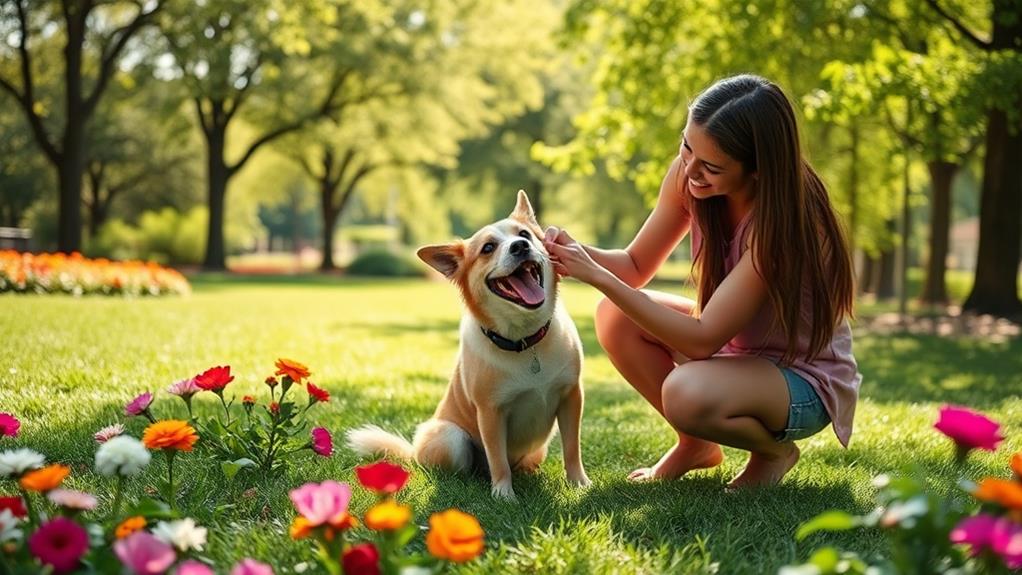
Many dog owners have experienced remarkable transformations in their anxious rescue dogs through dedicated training and patience. You might be surprised to learn how a structured behavior modification plan can lead to significant improvements. Here are a few success stories that exemplify this journey:
| Dog Name | Transformation Summary | Key Techniques Used |
|---|---|---|
| Bella | From fearful to friendly with strangers | Positive reinforcement, socialization |
| Max | Overcame separation anxiety | Gradual desensitization, crate training |
| Charlie | Went from hiding to playing with toys | Interactive play, confidence-building exercises |
| Daisy | Learned to trust humans again | Clicker training, consistent routines |
| Leo | Stopped excessive barking | Calm commands, reward-based training |
These cases show how commitment can lead to wonderful changes. You can witness the same potential in your dog. By applying behavior modification techniques with love and consistency, you'll help your anxious rescue dog thrive. Remember, every small step counts!
Frequently Asked Questions
How Long Does Behavior Modification Take to Show Results?
Behavior modification can show results within a few weeks, but it often takes several months for significant changes. Your consistency and diligence are essential in helping your dog adjust and thrive in their new environment.
Can Behavior Modification Help With Aggression Issues in Rescue Dogs?
Yes, behavior modification can help with aggression issues in rescue dogs. By implementing consistent training and positive reinforcement, you'll teach your dog to respond calmly to triggers, improving their behavior and enhancing your bond together.
Is Professional Training Necessary for Behavior Modification?
You don't always need professional training for behavior modification, but it can be beneficial. A skilled trainer can offer tailored guidance, helping you effectively address specific issues and ensuring a more positive experience for both you and your dog.
What Signs Indicate My Dog Is Responding Well to Training?
Over 70% of dogs show improvement within a few weeks of consistent training. You'll notice your dog becoming more relaxed, responding to commands, and seeking positive interactions. These signs indicate your training efforts are working effectively.
Are There Any Risks Associated With Behavior Modification Techniques?
Yes, there are risks with behavior modification techniques. If not done correctly, they might exacerbate anxiety or lead to fear-based reactions. Always guarantee you're using positive reinforcement methods and consult a professional if unsure.
Conclusion
In the journey to calm your anxious rescue dog, think of yourself as a lighthouse guiding a ship through turbulent waters. By using behavior modification, you provide a steady beam of hope and clarity. Each technique you implement and every moment of trust you build acts like a gentle wave, soothing their fears. With patience and consistency, you'll watch your dog transform, emerging from the shadows into the warm light of confidence and joy. Together, you'll navigate to brighter shores.

